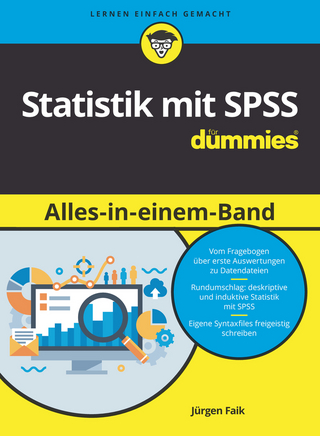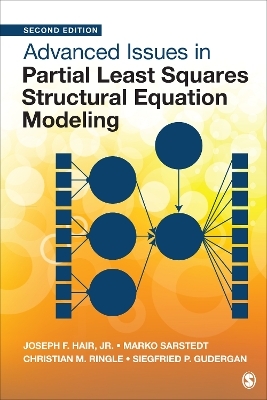
A Workout in Computational Finance, with Website
John Wiley & Sons Inc (Verlag)
978-1-119-97191-7 (ISBN)
A comprehensive introduction to various numerical methods used in computational finance today Quantitative skills are a prerequisite for anyone working in finance or beginning a career in the field, as well as risk managers. A thorough grounding in numerical methods is necessary, as is the ability to assess their quality, advantages, and limitations. This book offers a thorough introduction to each method, revealing the numerical traps that practitioners frequently fall into. Each method is referenced with practical, real-world examples in the areas of valuation, risk analysis, and calibration of specific financial instruments and models. It features a strong emphasis on robust schemes for the numerical treatment of problems within computational finance. Methods covered include PDE/PIDE using finite differences or finite elements, fast and stable solvers for sparse grid systems, stabilization and regularization techniques for inverse problems resulting from the calibration of financial models to market data, Monte Carlo and Quasi Monte Carlo techniques for simulating high dimensional systems, and local and global optimization tools to solve the minimization problem.
MICHAEL AICHINGER obtained his Ph.D. in Theoretical Physics from the Johannes Kepler University Linz with a thesis on numerical methods in density functional theory and their application to 2D finite electron systems. A mobility grant led him to the Texas A&M University (2003) and to the Helsinki University of Technology (2004). In 2007 Michael Aichinger joined the Industrial Mathematics Competence Center where he has been working as a senior researcher and consultant in the field of quantitative finance for the last five years. He also works for the Austrian Academy of Sciences at the Radon Institute for Computational and Applied Mathematics where he is involved in several industrial mathematics and computational physics projects. Michael has (co-) authored around 20 journal articles in the fields of computational physics and quantitative finance. ANDREAS BINDER obtained his Ph.D. in Industrial Mathematics from the Johannes Kepler University Linz with a thesis on continuous casting of steel. A research grant led him to the Oxford Center for Industrial and Applied Mathematics, UK, in 1991, where he got in touch with mathematical finance for the first time. After some years being an assistant professor at the Industrial Mathematics Institute, in 1996, he left university and became managing director of MathConsult GmbH, where he heads also the Computational Finance Group. Andreas has authored two introductory books on mathematical finance and 25 journal articles in the fields of industrial mathematics and of mathematical finance.
Acknowledgements xiii
About the Authors xv
1 Introduction and Reading Guide 1
2 Binomial Trees 7
2.1 Equities and Basic Options 7
2.2 The One Period Model 8
2.3 The Multiperiod Binomial Model 9
2.4 Black-Scholes and Trees 10
2.5 Strengths and Weaknesses of Binomial Trees 12
2.5.1 Ease of Implementation 12
2.5.2 Oscillations 12
2.5.3 Non-recombining Trees 14
2.5.4 Exotic Options and Trees 14
2.5.5 Greeks and Binomial Trees 15
2.5.6 Grid Adaptivity and Trees 15
2.6 Conclusion 16
3 Finite Differences and the Black-Scholes PDE 17
3.1 A Continuous Time Model for Equity Prices 17
3.2 Black-Scholes Model: From the SDE to the PDE 19
3.3 Finite Differences 23
3.4 Time Discretization 27
3.5 Stability Considerations 30
3.6 Finite Differences and the Heat Equation 30
3.6.1 Numerical Results 34
3.7 Appendix: Error Analysis 36
4 Mean Reversion and Trinomial Trees 39
4.1 Some Fixed Income Terms 39
4.1.1 Interest Rates and Compounding 39
4.1.2 Libor Rates and Vanilla Interest Rate Swaps 40
4.2 Black76 for Caps and Swaptions 43
4.3 One-Factor Short Rate Models 45
4.3.1 Prominent Short Rate Models 45
4.4 The Hull-White Model in More Detail 46
4.5 Trinomial Trees 47
5 Upwinding Techniques for Short Rate Models 55
5.1 Derivation of a PDE for Short Rate Models 55
5.2 Upwind Schemes 56
5.2.1 Model Equation 57
5.3 A Puttable Fixed Rate Bond under the Hull-White One Factor Model 63
5.3.1 Bond Details 64
5.3.2 Model Details 64
5.3.3 Numerical Method 65
5.3.4 An Algorithm in Pseudocode 68
5.3.5 Results 69
6 Boundary, Terminal and Interface Conditions and their Influence 71
6.1 Terminal Conditions for Equity Options 71
6.2 Terminal Conditions for Fixed Income Instruments 72
6.3 Callability and Bermudan Options 74
6.4 Dividends 74
6.5 Snowballs and TARNs 75
6.6 Boundary Conditions 77
6.6.1 Double Barrier Options and Dirichlet Boundary Conditions 77
6.6.2 Artificial Boundary Conditions and the Neumann Case 78
7 Finite Element Methods 81
7.1 Introduction 81
7.1.1 Weighted Residual Methods 81
7.1.2 Basic Steps 82
7.2 Grid Generation 83
7.3 Elements 85
7.3.1 1D Elements 86
7.3.2 2D Elements 88
7.4 The Assembling Process 90
7.4.1 Element Matrices 93
7.4.2 Time Discretization 97
7.4.3 Global Matrices 98
7.4.4 Boundary Conditions 101
7.4.5 Application of the Finite Element Method to Convection-Diffusion-Reaction Problems 103
7.5 A Zero Coupon Bond Under the Two Factor Hull-White Model 105
7.6 Appendix: Higher Order Elements 107
7.6.1 3D Elements 109
7.6.2 Local and Natural Coordinates 111
8 Solving Systems of Linear Equations 117
8.1 Direct Methods 118
8.1.1 Gaussian Elimination 118
8.1.2 Thomas Algorithm 119
8.1.3 LU Decomposition 120
8.1.4 Cholesky Decomposition 121
8.2 Iterative Solvers 122
8.2.1 Matrix Decomposition 123
8.2.2 Krylov Methods 125
8.2.3 Multigrid Solvers 126
8.2.4 Preconditioning 129
9 Monte Carlo Simulation 133
9.1 The Principles of Monte Carlo Integration 133
9.2 Pricing Derivatives with Monte Carlo Methods 134
9.2.1 Discretizing the Stochastic Differential Equation 135
9.2.2 Pricing Formalism 137
9.2.3 Valuation of a Steepener under a Two Factor Hull-White Model 137
9.3 An Introduction to the Libor Market Model 139
9.4 Random Number Generation 146
9.4.1 Properties of a Random Number Generator 147
9.4.2 Uniform Variates 148
9.4.3 Random Vectors 150
9.4.4 Recent Developments in Random Number Generation 151
9.4.5 Transforming Variables 152
9.4.6 Random Number Generation for Commonly Used Distributions 155
10 Advanced Monte Carlo Techniques 161
10.1 Variance Reduction Techniques 161
10.1.1 Antithetic Variates 161
10.1.2 Control Variates 163
10.1.3 Conditioning 166
10.1.4 Additional Techniques for Variance Reduction 168
10.2 Quasi Monte Carlo Method 169
10.2.1 Low-Discrepancy Sequences 169
10.2.2 Randomizing QMC 174
10.3 Brownian Bridge Technique 175
10.3.1 A Steepener under a Libor Market Model 177
11 Valuation of Financial Instruments with Embedded American/Bermudan Options within Monte Carlo Frameworks 179
11.1 Pricing American options using the Longstaff and Schwartz algorithm 179
11.2 A Modified Least Squares Monte Carlo Algorithm for Bermudan Callable Interest Rate Instruments 181
11.2.1 Algorithm: Extended LSMC Method for Bermudan Options 182
11.2.2 Notes on Basis Functions and Regression 185
11.3 Examples 186
11.3.1 A Bermudan Callable Floater under Different Short-rate Models 186
11.3.2 A Bermudan Callable Steepener Swap under a Two Factor Hull-White Model 188
11.3.3 A Bermudan Callable Steepener Cross Currency Swap in a 3D IR/FX Model Framework 189
12 Characteristic Function Methods for Option Pricing 193
12.1 Equity Models 194
12.1.1 Heston Model 196
12.1.2 Jump Diffusion Models 198
12.1.3 Infinite Activity Models 199
12.1.4 Bates Model 200
12.2 Fourier Techniques 201
12.2.1 Fast Fourier Transform Methods 201
12.2.2 Fourier-Cosine Expansion Methods 203
13 Numerical Methods for the Solution of PIDEs 209
13.1 A PIDE for Jump Models 209
13.2 Numerical Solution of the PIDE 210
13.2.1 Discretization of the Spatial Domain 211
13.2.2 Discretization of the Time Domain 211
13.2.3 A European Option under the Kou Jump Diffusion Model 212
13.3 Appendix: Numerical Integration via Newton-Cotes Formulae 214
14 Copulas and the Pitfalls of Correlation 217
14.1 Correlation 218
14.1.1 Pearson’s ρ 218
14.1.2 Spearman’s ρ 218
14.1.3 Kendall’s τ 220
14.1.4 Other Measures 221
14.2 Copulas 221
14.2.1 Basic Concepts 222
14.2.2 Important Copula Functions 222
14.2.3 Parameter estimation and sampling 229
14.2.4 Default Probabilities for Credit Derivatives 234
15 Parameter Calibration and Inverse Problems 239
15.1 Implied Black-Scholes Volatilities 239
15.2 Calibration Problems for Yield Curves 240
15.3 Reversion Speed and Volatility 245
15.4 Local Volatility 245
15.4.1 Dupire’s Inversion Formula 246
15.4.2 Identifying Local Volatility 246
15.4.3 Results 247
15.5 Identifying Parameters in Volatility Models 248
15.5.1 Model Calibration for the FTSE- 100 249
16 Optimization Techniques 253
16.1 Model Calibration and Optimization 255
16.1.1 Gradient-Based Algorithms for Nonlinear Least Squares Problems 256
16.2 Heuristically Inspired Algorithms 258
16.2.1 Simulated Annealing 259
16.2.2 Differential Evolution 260
16.3 A Hybrid Algorithm for Heston Model Calibration 261
16.4 Portfolio Optimization 265
17 Risk Management 269
17.1 Value at Risk and Expected Shortfall 269
17.1.1 Parametric VaR 270
17.1.2 Historical VaR 272
17.1.3 Monte Carlo VaR 273
17.1.4 Individual and Contribution VaR 274
17.2 Principal Component Analysis 276
17.2.1 Principal Component Analysis for Non-scalar Risk Factors 276
17.2.2 Principal Components for Fast Valuation 277
17.3 Extreme Value Theory 278
18 Quantitative Finance on Parallel Architectures 285
18.1 A Short Introduction to Parallel Computing 285
18.2 Different Levels of Parallelization 288
18.3 GPU Programming 288
18.3.1 CUDA and OpenCL 289
18.3.2 Memory 289
18.4 Parallelization of Single Instrument Valuations using (Q)MC 290
18.5 Parallelization of Hybrid Calibration Algorithms 291
18.5.1 Implementation Details 292
18.5.2 Results 295
19 Building Large Software Systems for the Financial Industry 297
Bibliography 301
Index 307
| Erscheint lt. Verlag | 23.9.2013 |
|---|---|
| Reihe/Serie | The Wiley Finance Series |
| Verlagsort | New York |
| Sprache | englisch |
| Maße | 178 x 252 mm |
| Gewicht | 748 g |
| Themenwelt | Mathematik / Informatik ► Mathematik ► Computerprogramme / Computeralgebra |
| Wirtschaft ► Betriebswirtschaft / Management | |
| ISBN-10 | 1-119-97191-8 / 1119971918 |
| ISBN-13 | 978-1-119-97191-7 / 9781119971917 |
| Zustand | Neuware |
| Haben Sie eine Frage zum Produkt? |
aus dem Bereich


